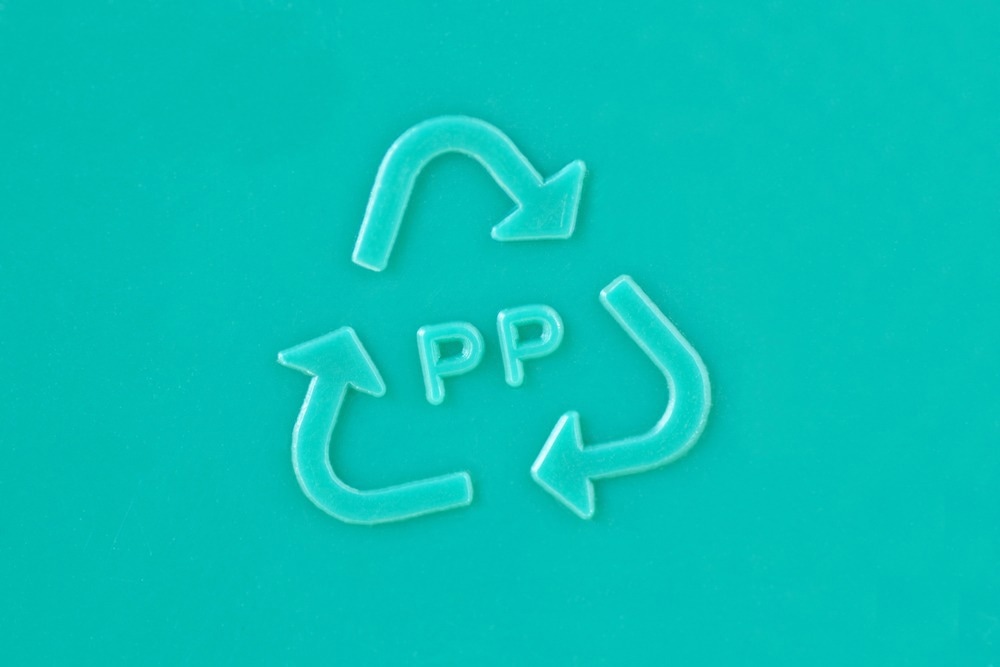|
Updated by Reginald Davey 23/11/22
This article will look at a specific polypropylene composite material, PP TD20, a commercially important polypropylene-based polymer that contains twenty per cent talc. Inclusion of this material improves the properties and commercial applications of polypropylene.

Image Credit: CalypsoArt/Shutterstock.com
|
|
Thermoplastic
Polypropylene: An Overview
Polypropylene is a highly versatile and economical thermoplastic polymer. Belonging to the group of polyolefins, this polymer is non-polar and partially crystalline. The monomer of polypropylene is propylene. It has the lowest density amongst widely-used commodity plastics.
It is more heat resistant and harder than polyethylene, which it has properties similar to. White in color, this polymer is mechanically rugged, has enhanced hardness, and possesses high chemical resistance to acids and alkalis. After polyethylene, it is the second most commonly produced commodity plastic for sectors such as the packaging industry, with a global market value of $126.03 billion in 2019.
With a density of 0.89-0.92 g per cm3, different types of propylene display variation in their properties due to chain length, crystallinity amount, molecular weight distribution, and the macromolecule’s isostacticity. Properties shared by all types of polypropylene include large degrees of thermal expansion, solubility in non-polar organic solvents such as xylene, toughness, and flexibility.
Aside from packaging, polypropylene is used in plastic piping, ropes, domestic rugs and carpets, drywall joint reinforcement, plastic medical items, and loudspeaker driver units. However, pure polypropylene possesses some key limitations in terms of its properties and behavior for commercial applications. These limitations facilitate the need to reinforce polypropylene, with various materials explored in recent decades.
PP TD20
PP TD20 is a form of polypropylene which contains 20% talc. The addition of this material improves some of the properties of polypropylene, overcoming key issues faced by the polymers industry with the application of this useful and important polymer.
|
|
PP TD20 possesses a number of advantages over pure and unmodified polypropylene. These include enhanced impact strength and chemical, heat, and creep resistance. These favorable properties make PP TD20 a more durable polymer than unmodified polypropylene.
Another problem with pure unmodified polypropylene arises due to its dimensional stability pre- and post-moulding. Adding twenty per cent talc by weight enhances this dimensional stability. Talc filler also improves cooling times in the mold during manufacture. Using talc filler also improves the cosmetic appeal of products by reducing problems such as sink marks.
|
|
There are, however, some disadvantages to PP TD20 compared to unmodified polypropylene. Materials can become embrittled due to the inclusion of talc, and can suffer from a low elongation at break. Moreover, despite aesthetic improvements such as reducing the instance of untoward sink marks, PP TD20 possesses a poorer surface appearance than pure polypropylene.
|
|
This modified polypropylene material has several key applications in a number of important industries.
It is used in the automotive industry for various “under the bonnet” applications. These include cooling fans, electrical systems housing, and air ducting components. It is also used in headlight housing and facia panels.
PP TD20 is also applied in domestic devices such as washing machines, where is it used in several essential components. Kettle bodies, electric iron housing, and materials for use in toasters are other domestic uses for this material. It is also used in durable and weather-resistant garden furniture such as tables and chairs.
In Conclusion
The inclusion of talc improves the mechanical, thermal, and physiochemical properties and quality of unmodified polypropylene, a key commercial plastic used widely in several industries. There are some disadvantages to PP TD20, however, which does limit their use in certain applications somewhat. However, the use of talc as a filler is a well-recognized modification strategy for this polymer.
More from AZoM: Polypropylene Polystone PPH – Properties and Applications of Polypropylene Polystone PPH
|